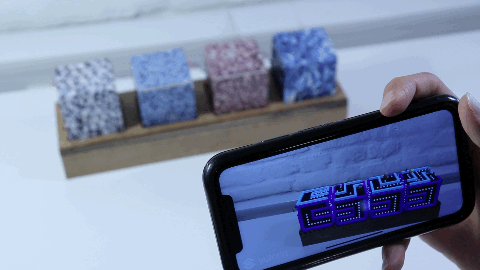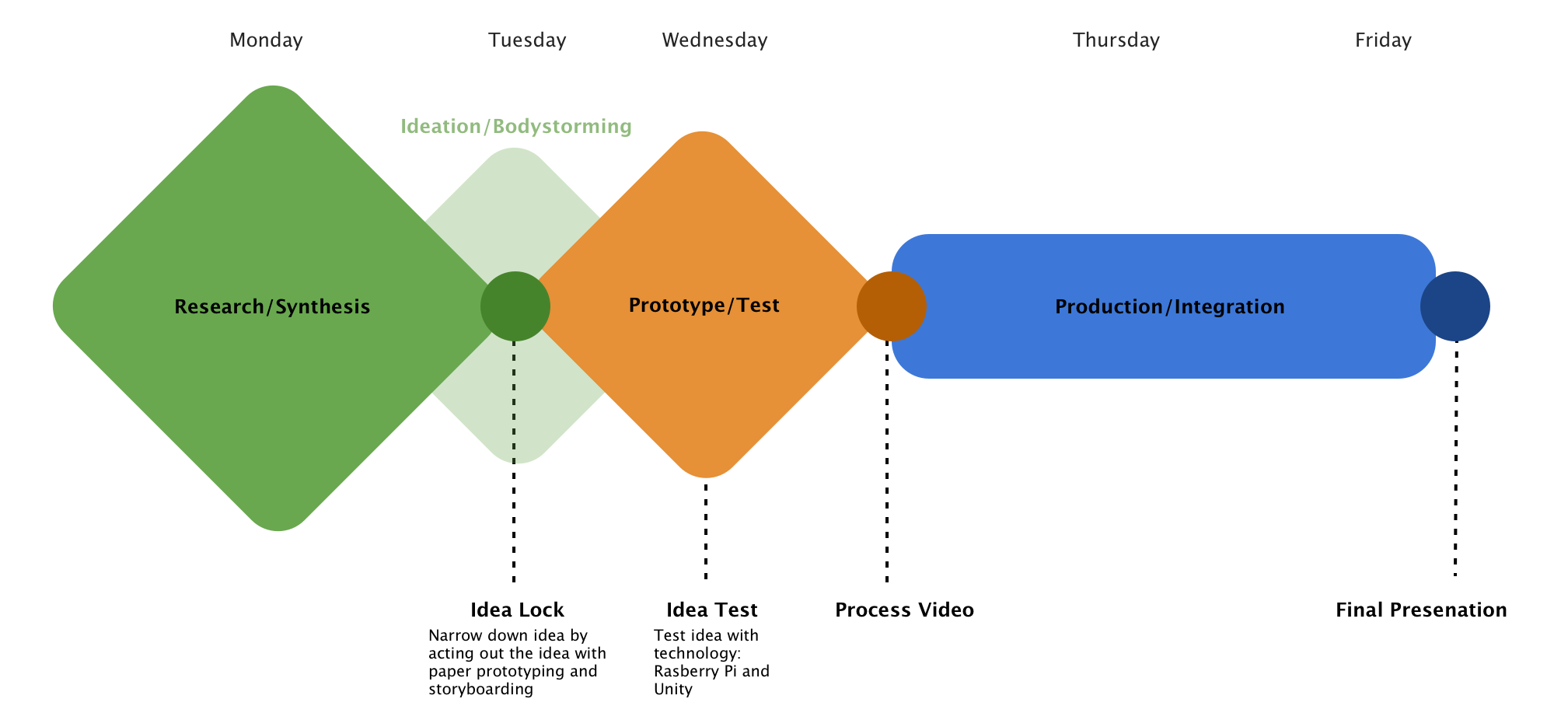Future of Password
Concept
Create the password that manifests both in the physical and virtual world
BRIEF Explore Mixed Reality Technology from Physical Input/Output (During Immersive Experience Class at CIID)
MY ROLE
Conducted secondary research and worked on the initial ideation session;
Contextualized the idea with bodystorming method;
Integrated different parts of the prototype and imported into the phone with Unity and Xcode
DURATION
One week
TEAM MEMBERS
Amit Aggarwal
Davi Magalhães
Shailee Advani
ADVISORS
James Tichenor
Joshua Walton
Context
Mixed Reality Technology shows the new possibility of interaction between the physical and virtual world
We started exploring Mixed Reality Technology by doing small experiments with different materials. With power relay that is attached to Raspberry Pi, we designed the Rube Goldberg machine, of which in the beginning, there will be virtual balls fall into the “ground”, and this will trigger a physical power replay to turn on the fan. The fan will continue causing chain of reactions.
From the experiment, we built basic knowledge about the tools available for prototyping. Besides, it is clear that new interaction between the physical and virtual world could happen and bring novel experience.
Exploration of Mixed Reality Technology: Virtual cue will trigger the chain of actions in the physical world
Exploring physical manifestation of password
The password is often seen as an entity that has purely virtual form. With Mixed Reality Technolgy, the password could possibly be brought into the physical world. The questions lie in: What will be the context? And how might we design the interactions of inputting passwords?

Photo Credit: Unsplash
Concept
Future of password explores the physical manifestation of the password with Mixed Reality Technology.
One potential outcome is to help people consciously use social media platform; To open their social media account, people need to play a puzzle with cubes as physical password input. After reaching the screen time limit, the cubes will flip and the social media account will close. This is to remind people about their screen usage. In order to acess to the social media, people have to re-enter the password.
One potential outcome is to help people consciously use social media platform; To open their social media account, people need to play a puzzle with cubes as physical password input. After reaching the screen time limit, the cubes will flip and the social media account will close. This is to remind people about their screen usage. In order to acess to the social media, people have to re-enter the password.
The password is represented in the form of four identical cubes that sit on a stand. Through an AR-enabled device (in this case, through the user’s own phone), the user can see a virtual puzzle of Pac-man that lives on the surface of the cubes.
 Cubes represent passwords
Cubes represent passwordsThe user has to solve the puzzle to unlock the phone or app they are trying to access.

Move cubes to make up passwords
However, entering the password grants access only for a short time. When the time is up, four cubes will flip off of their resting positions, reshuffling the puzzle. In order to acess the app, people need to rearrange the cubes to input password again.
 Screen usage time is up and then cubes will be flipped again
Screen usage time is up and then cubes will be flipped againProcess

Process Overview
Research/Ideation
We started looking at what could be possible physical input/output with the Mixed Reality Technology by conducting secondary researches. We became interested in how an input or interaction in the physical world could cause a change in the virtual world and vice versa. While often the virtual world is modeled on the physical, virtual objects have no physical form or presence in conventional reality.
After exploring varieties of purely virtual things, we decided to go ahead with one brainstorming session exploring how passwords might be represented in the physical world and what interactions might look like.
We filtered all the ideas based on the criteria of functionality and feasibility. And by use the bodystorming method, we locked on one idea.
After exploring varieties of purely virtual things, we decided to go ahead with one brainstorming session exploring how passwords might be represented in the physical world and what interactions might look like.
We filtered all the ideas based on the criteria of functionality and feasibility. And by use the bodystorming method, we locked on one idea.

Research Board
 Storyboarding of Ideas
Storyboarding of Ideas
Prototype
During the prototype phase, we divided the projects into two parts: the virtual part, where the prototype was done mainly on Unity; and the physical part, where the prototype was done mostly with Rasberry Pi. We then connect these two parts with Spacebrew, an open source software developed especially for Mixed Reality Technology.

Digital Prototype with Unity

Physical prototype with Rasberry Pi
Production
 Working on prototype
Working on prototype
Learnings
-Affordance is a tricky thing when it comes to MR. People (including the designers who are creating these projects sometimes) don’t have an established mental model of what an MR object might behave like. It is, therefore important to rely on previously established paradigms of interaction in the physical or virtual world.
- The physical framing of the project matters to have a convincing mixed reality experience and to provide continuity between the physical and virtual world.
- It is crucial to direct the eye of the user when setting up an MR project as there is an inherent confusion about where to look at the physical object you are interacting with or at the screen where you see the MR output.
- The physical framing of the project matters to have a convincing mixed reality experience and to provide continuity between the physical and virtual world.
- It is crucial to direct the eye of the user when setting up an MR project as there is an inherent confusion about where to look at the physical object you are interacting with or at the screen where you see the MR output.